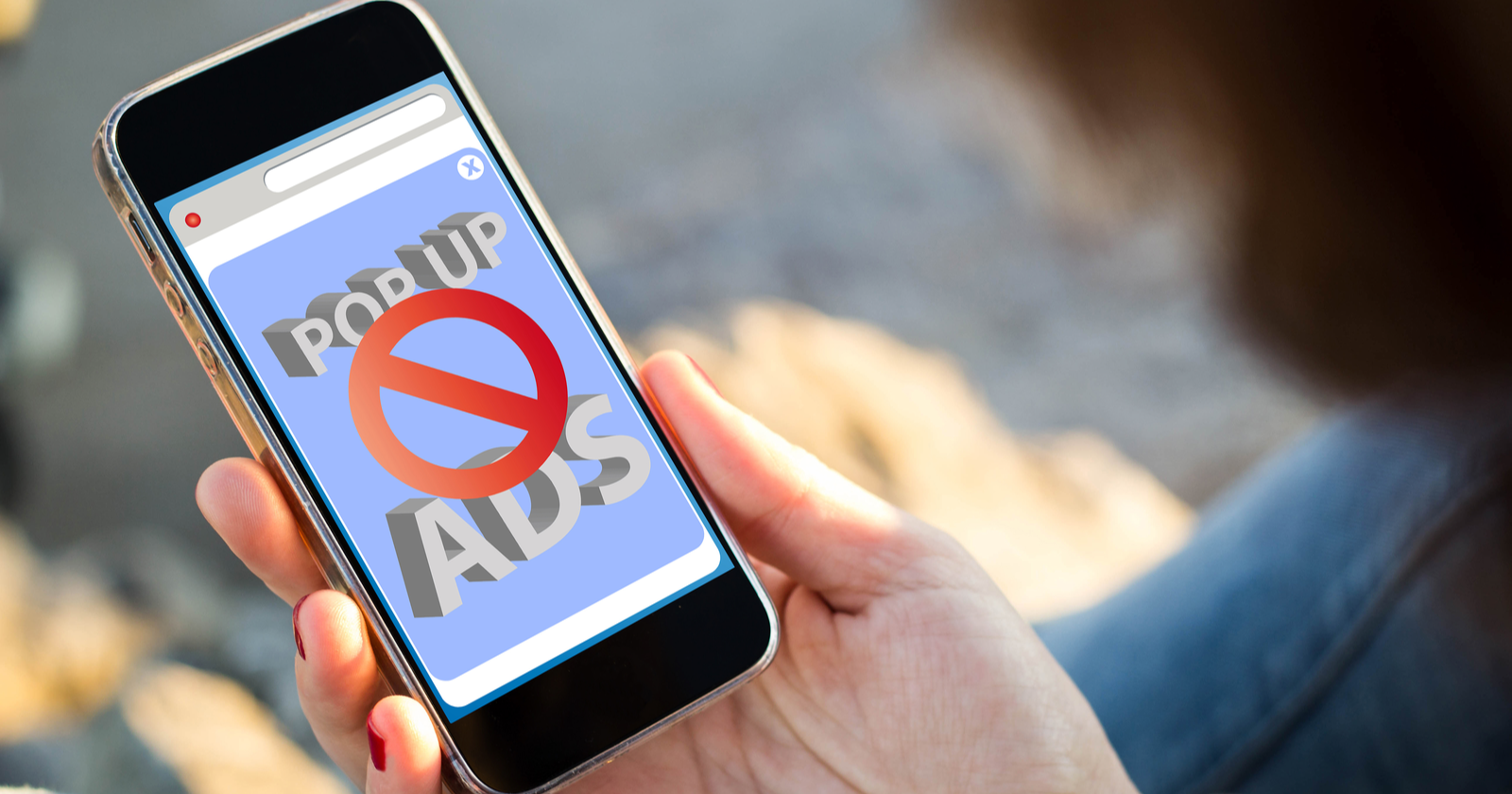You know them, you love them, and yes, you hate them.
Pop-ups! They’re a content marketer’s best friend with an average conversion rate of 11.09%.
But using pop-ups is also risky ever since Google announced they would be devaluing websites with intrusive pop-up ads in 2018.
So, this article aims to clear up some of the uncertainty surrounding pop-ups and SEO.
Here are seven tips for using pop-ups without harming your SEO.
1. Understand Which Interstitials Are No-Goes
Google’s mobile interstitial penalty specifically targets intrusive interstitials.
Note that “interstitial” is a broad term that can be widely applied to most pop-ups, overlays, and modals, but not all interstitials are considered equally intrusive.
As a general rule of thumb, if your interstitials are spammy, difficult to dismiss, or diminish your users’ experience, your mobile page may be devalued.
And, because Google’s indexing is now mobile-first, this may hurt your positions in the SERPs more than you realize.
The following are all examples of interstitials that make your content less accessible:
- Content-covering pop-ups that users are forced to close to continue reading.
- Standalone interstitials must be dismissed before users can access your content.
- Deceptive page layouts whose above-the-fold portion looks like an interstitial.
You should also avoid ads that Google’s known to dislike and has penalized in the past, including:
- Classic interstitial ads and splash ads that interrupt users as they navigate between pages and/or before they reach your homepage.
- New window pop-ups that open as soon as a user clicks on your page.
- Welcome mats, new window pop-ups, and other intrusive ads.
- Overlay modals that are difficult to close and/or easily redirect visitors who accidentally click on them.
- Intrusive lightbox ads and pop-ups.
Furthermore, Google’s John Mueller confirmed that interstitials triggered by exit intent are still allowed.
However, be careful about relying too heavily on these. Annoying your visitors is never a good idea.
2. Continue Using Non-Intrusive Interstitials
Google doesn’t penalize non-intrusive interstitials.
These include anything you’re legally required to display to restrict content or keep your users informed, such as age verification interstitials and cookie use notifications.
Other pop-ups, such as banner ads, slide-ins, inlines and tabs, that take up a reasonable portion of the screen (15% or less is recommended) are also OK, as long as they’re easy to dismiss.
If you aren’t sure whether your interstitials are considered intrusive, I recommend avoiding full-screen overlays, welcome mats, and ad modals.
Whenever possible, try to switch to top banners and slide-in boxes that allow users to continue viewing your content and don’t disrupt UX too much.
3. Switch To Timed Pop-ups
If you absolutely must continue to use pop-ups and overlays, you can try to redesign them to be as non-intrusive as possible.
One of the biggest things you can change is the timing of your interstitials.
For example, instead of displaying a pop-up as soon as a user lands on your page, time your pop-up for when users have finished your blog post.
You can also limit how long pop-ups are displayed – a pop-up that automatically closes after three seconds of user inaction is better than one that never closes on its own.
Of course, the challenge with this type of interstitial is that timed pop-ups are only as effective as your content.
If your content isn’t compelling enough to keep users on-site, clicking through your pages and reading your content, then consider investing in your content marketing before you start plugging it with ads.
4. Watch Out For “Gray Area” Interstitials
Some interstitials impacted by Google’s interstitial penalty might surprise you.
For example, Mueller confirmed that language selection pop-ups on international sites might be devalued, because “yes, those are popups/interstitials too.”
Carefully monitor your page performance if you’re using these or other “gray area” interstitials, such as sticky sidebars, related posts, share buttons, live chat boxes, and coupon pop-ups.
While I don’t expect these to negatively impact SEO, it’s better to be safe than sorry.
5. Use Permitted (But Intrusive) Pop-ups Cautiously
Some ads are definitely interruptive but aren’t penalized.
These “gray area” pop-ups are permitted, but be warned that Google could crackdown on them in the future (they’re certainly moving in that direction):
- Page-to-page interstitials: According to Mueller, Google’s interstitial penalty only devalues interstitials that pop up when moving from SERP to a site page, but interstitials between site pages are still fine. However, we know that Google values good UX, and page-to-page interstitials certainly are not good UX.
- Interstitials triggered by exit intent: Mueller also confirmed that pop-ups triggered by exit intent aren’t punished by the new update. Simply put a no-index tag in your code to avoid landing on the wrong side of the interstitial penalty.
Fair warning if you decide to use these interstitials: They may be penalized at some point in the (near) future, even though nothing in the new algorithm update targets these interstitials.
The only three constants in this world are death, taxes, and Google making changes for better UX.
6. You Can Still Use Intrusive Ads On Desktop
Some websites have found a band-aid solution to the interstitial penalty, which is to hide pop-ups on mobile devices and continue to use them exclusively for desktop visitors.
Many pop-up plugins include smart targeting options that allow you to only display your ads on specific platforms.
Some website platforms such as Wix also allow you to hide potentially intrusive pop-ups on all mobile devices.
Again, however, pop-ups that are intrusive and diminish your UX could be punished under a future update.
I recommend you find more permanent solutions than temporarily hiding your mobile pop-ups.
7. Restrict Pop-ups To Sources Other Than Google Organic Search
Another “gray area” that you could exploit is to only put pop-ups in front of visitors moving between site pages or finding your website through sources other than Google organic search results.
According to Mueller, these won’t be impacted by the new algorithm update:
“What we’re looking for is really interstitials that show up on the interaction between the search click and going through the page and seeing the content. So, that’s kind of the place we’re looking for those interstitials.
What you do afterward, like if someone clicks on stuff within your website or closes the tab or something like that, then that’s kind of between you and the user.”
Of course, if organic search drives a lot of your traffic and it’s working to generate leads, don’t feel too pressured to switch.
Remember that the new interstitial penalty is just one signal among hundreds, and an interstitial ad or two won’t sink a website that’s otherwise chock-full of useful content.
Final Thoughts
So, here we are, years later, websites are still using pop-ups on mobile and ranking well!
Even if this is news to you, you can breathe a sigh of relief – you probably haven’t been deeply affected by this update.
But if you think Google’s mobile interstitials penalty may have hit your site, check out this article on how to recover.
More Resources:
- Google: Sites Can Safely Display Pop-Ups On Temporary Basis
- How Do Ads, Interstitials & Supplemental Content Affect SEO Visibility?
- Core Web Vitals: A Complete Guide
Featured Image: McLittle Stock/Shutterstock





![[SEO, PPC & Attribution] Unlocking The Power Of Offline Marketing In A Digital World](https://www.searchenginejournal.com/wp-content/uploads/2025/03/sidebar1x-534.png)